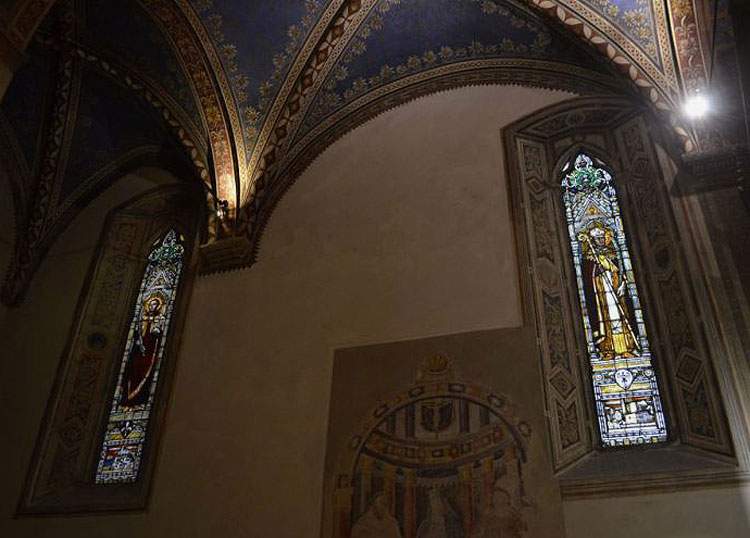Restoration work in the Basilica of St. Francis in Arezzo has been completed, particularly involving the stone surfaces and polychrome stained glass windows. The interventions were necessitated by the sudden collapse in January 2020 of the central column of the mullioned window of the Guasconi Chapel, and therefore, after the immediate securing, the Regional Directorate Museums of Tuscany, thanks to a significant funding allocated by MiBACT, started the restoration work, based on a project by architect Lorenza Carlini. The work site, directed by architect Rossella Sileno, director of the museum site, started at the end of July and lasted five months, affecting the exterior elevations, the mullioned windows of the two apsidal chapels and the single-lancet windows of the left aisle.
Among the main interventions were the replacement of the stone columns of the mullioned windows of the Guasconi Chapel and the Tarlati Chapel of Pietramala, which were reopened in the first decade of the twentieth century during the restoration work led by Umberto Tavanti. The two sandstone columns were replaced by others in Santa Brigida boulder bigia stone, more resistant, faithfully taking up the profile and dimensions of the previous ones, but with a sandblasted finish that allows the restoration work to be distinguished.
The exterior wall surfaces, with their decorative carved sandstone elements, have undergone careful cleaning, consolidation and restoration, restoring an image that highlights the simplicity of Franciscan architecture.
The interventions on the stained glass windows of the Guasconi Chapel and the Tarlati Chapel of Pietramala and on the five historiated single-lancet windows on the left side of the Basilica, directed by the restorer of the Regional Directorate Giulia Basilissi, have made it possible to recover the original chromatic and transparency effects.
The stained glass windows of the Chapel of the Fallen were made in 1923 by the famous kiln founded and directed by Galileo Chini, as evidenced by the inscription on the lower edge “Fornaci - di San Lorenzo - Chini e Cc - Borgo S Lorenzo.” Sources also trace the stained glass window with the coat of arms of the War Mutilated to the same manufacture. After cleaning, the figures of St. Justus and St. Vigilius, respectively the patron saints of Trieste and Trent, the views of these two cities and their coats of arms took on greater prominence.
The other two restored stained-glass windows, depicting St. Seraphim and St. Benedict, were made in 1911 in the Florentine workshop of Ulisse De Matteis to a design by Ezio Giovannozzi.
Thanks to the restoration, it was possible to recover the original lighting effects and fully enhance the polychromy of the stained glass windows, which have been protected with a counter-glazing system equipped with UV filters, functional for better preservation of the glass and leads and improved external visibility.
Pictured are the stained glass windows depicting St. Justus and St. Vigilius in the Basilica of St. Francis in Arezzo.
 |
| Arezzo, restoration of polychrome stained glass windows in Basilica di San Francesco completed |
Warning: the translation into English of the original Italian article was created using automatic tools. We undertake to review all articles, but we do not guarantee the total absence of inaccuracies in the translation due to the program. You can find the original by clicking on the ITA button. If you find any mistake,please contact us.